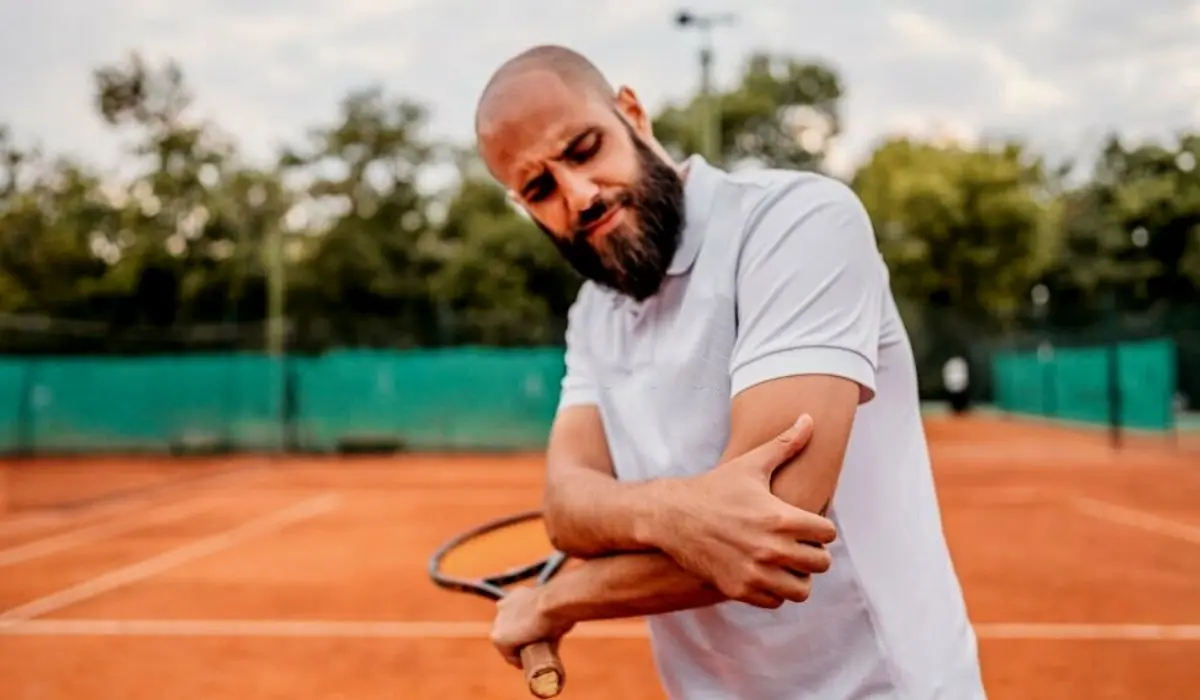Tennis is one of the most watched sports in the world. We have a number of idols to look up to and people often get hooked up in stadiums to see their favorite players serve it off on the green fields. However, like most sports, tennis also comes with its own set of challenges. This means it can also lead to injuries and surgeries that could affect your performance or your career as a whole. This blog will look at the common shoulder injuries a tennis player could suffer from and what precautions one might want to take to avoid them.
Types Of Tennis Player Shoulder Injuries
There are several injuries that could affect you as a part of the repeated motion a tennis player makes a part of their routine.

These are-
- Rotator cuff– This is caused by the improper use of hands and they can lead to swelling and tearing up of tendons. Some of its symptoms include pain, restricted movement, and swelling.
- Shoulder Impingement syndrome– Also caused by repeated motions that affect the subacromial bursa, its symptoms often show up as pain while lifting up your hands, especially for overhead shots.
- Labral tears– This is extremely painful as it leads to tears of the labrum. It can either be due to a sudden jerk or accident and can lead to pain, swelling, and popping sounds when you move the shoulder inside the socket.
- Adhesive Capsulitis– When you are someone who frequently moves your shoulder and decides to stop it all at once, this could cause pain and swelling. You might not suddenly feel the pain but it will set in gradually.
- Biceps Tendonitis– As the name suggests, it could manifest as a sharp pinching pain in the shoulder and will limit your range of motion which is a barrier when it comes to tennis.
- AC joint sprain– The spraining of Acromioclavicular on the shoulder can lead to a deformed shoulder with intense swelling,
- Gionohumeral Instability– Commonly known as shoulder dislocation. this can lead to pain in the shoulder socket. A feeling of lightness can lead to pain in the arms and may mess up your posture.
- Thoracic outlet syndrome– This occurs when the blood vessels between the shoulders start pressing due to overuse. You may feel tingling or numbness in your arms.
- Scapular Dyskinesia– Restricted movement of the shoulder blade which can cause the loss of sensation in the arms and shoulders as well.
Preventive Strategies For A Shoulder Injury
Rehabilitating from a shoulder injury is not an easy feat either and requires many careful strategies that include-
1. Medical Evaluation-
Never self-diagnose. Always trust someone from sports medicine or an orthopedic doctor who can pinpoint the exact cause of your pain. Remember you need to find the disease to fight it off.
2. Rest And Immobilization-
Once you know that there is a problem, don’t overstress or compromise in your rest. If you don’t rest, things could get worse and you might end up losing your full range of motion.
3. Pain Management-
Seek the help of a doctor to treat your pain with or without medications. There could also be crutches or supports you could wear to give your shoulders the much-needed scaffold.
4. Physical Therapy-
After pain management, you might need to work with a physical therapist to regain your complete strength.
5. Engage In Motion Exercises-
This doesn’t mean you start throwing off your shoulder first but the limited and controlled movement to bring back your lost vivacity.
6. Strengthening And Functional Exercises-
After you are able to move your shoulders you should go for lightweight exercises which could be guided. Next, you can move on to functional exercises that include mimicking the actions you might need to make while playing the actual game.
7. Balance Training-
Always remember to work on your balance and posture to avoid getting injuries and strengthen your core.
Also Read:- Tennis Player Rehabilitation: Techniques And Challenges
8. Gradual Return To Play-
Don’t rush it. When you naturally feel better devote 30 minutes to playing the game and you could begin from the basics like serving up a ball or hitting easy shots.
9. Prevention-
It is always better than cure. Don’t over-exert. Know your limitations and work on them rather than repeating the mistake again.
10. Communicate-
Talk to your healthcare provider about your insecurities and pain to plan your play beforehand.
Rehabilitation and injuries are a part of outdoor sports so you need to be patient at all times.